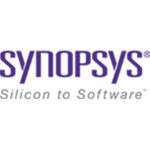Xilinx, Inc. announced Vitis (pronounced Vī-tis), a unified software platform that enables a broad new range of developers – including software engineers and AI scientists – to take advantage of the power of hardware adaptability. The Vitis unified software platform automatically tailors the Xilinx hardware architecture to the software or algorithmic code without the need for hardware expertise. Rather than imposing a proprietary development environment, the Vitis platform plugs into common software developer tools and utilizes a rich set of optimized open source libraries, enabling developers to focus on their algorithms. Vitis is separate to the Vivado Design Suite, which will still be supported for those who want to program using hardware code, but Vitis can also boost the productivity of hardware developers by packaging hardware modules as software-callable functions.
The Vitis platform is built on a stack-based architecture that plugs seamlessly into open-source standard development systems and build environments, but most importantly, it includes a rich set of standard libraries.
The base layer is the Vitis target platform, which includes a board and preprogrammed I/O. The second layer, called the Vitis core development kit, encompasses the open-source Xilinx runtime library to manage the data movement between different domains, including the subsystems, the AI Engine in the forthcoming Versal ACAP, as well as an external host, if required. This layer also includes the core development tools such as compilers, analyzers and debuggers. While Xilinx provides a world-class design environment, these tools are designed to integrate seamlessly with industry-standard build systems and development environments.
In the third layer are more than 400 optimized and open-source applications across eight Vitis libraries.
These include the Vitis Basic Linear Algebra Subprograms (BLAS) library, the Vitis Solver library, theVitis Security library, the Vitis Vision library, the Vitis Data Compression library, the Vitis Quantitative Finance library, the Vitis Database library and the Vitis AI library. These software developers to call pre-accelerated functions using a standard application programming interface (API).
The fourth element of the platform is Vitis AI, which integrates a domain-specific architecture (DSA). The DSA configures Xilinx hardware to be optimized and programmed using industry-leading frameworks like TensorFlow and Caffe. Vitis AI provides the tools to optimize, compress and compile trained AI models running on a Xilinx device in about one minute. It also delivers specialized APIs for deployment from edge to cloud, all with best-in-class inference performance and efficiency.
The Vitis unified software platform, which provides software developers the efficiency of applicationspecific hardware without the need for new silicon, is free for Xilinx boards and will be available for download next month. Sign up for Vitis alerts to be notified.



Leave a Reply